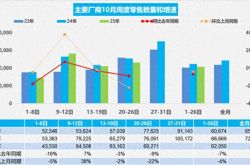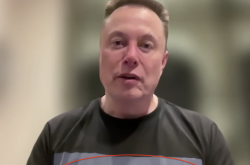Asian Auto Market | Japan in August 2025: An Overall Downturn with Varied Brand Outcomes
![]() 09/15 2025
09/15 2025
![]() 622
622
Compiled by Zhineng Technology
In August 2025, the Japanese automotive market witnessed a second consecutive month of sales decline, with a year-on-year decrease of 8.3%, totaling 301,000 units. Despite this, cumulative sales for the year still showed a 6.2% increase.
Toyota experienced a notable downturn, with its market share dipping to 29.9%. In contrast, Suzuki emerged as one of the few brands to achieve growth. Certain models, such as the Daihatsu Move and Toyota Raize, managed to perform well amidst the market slump.
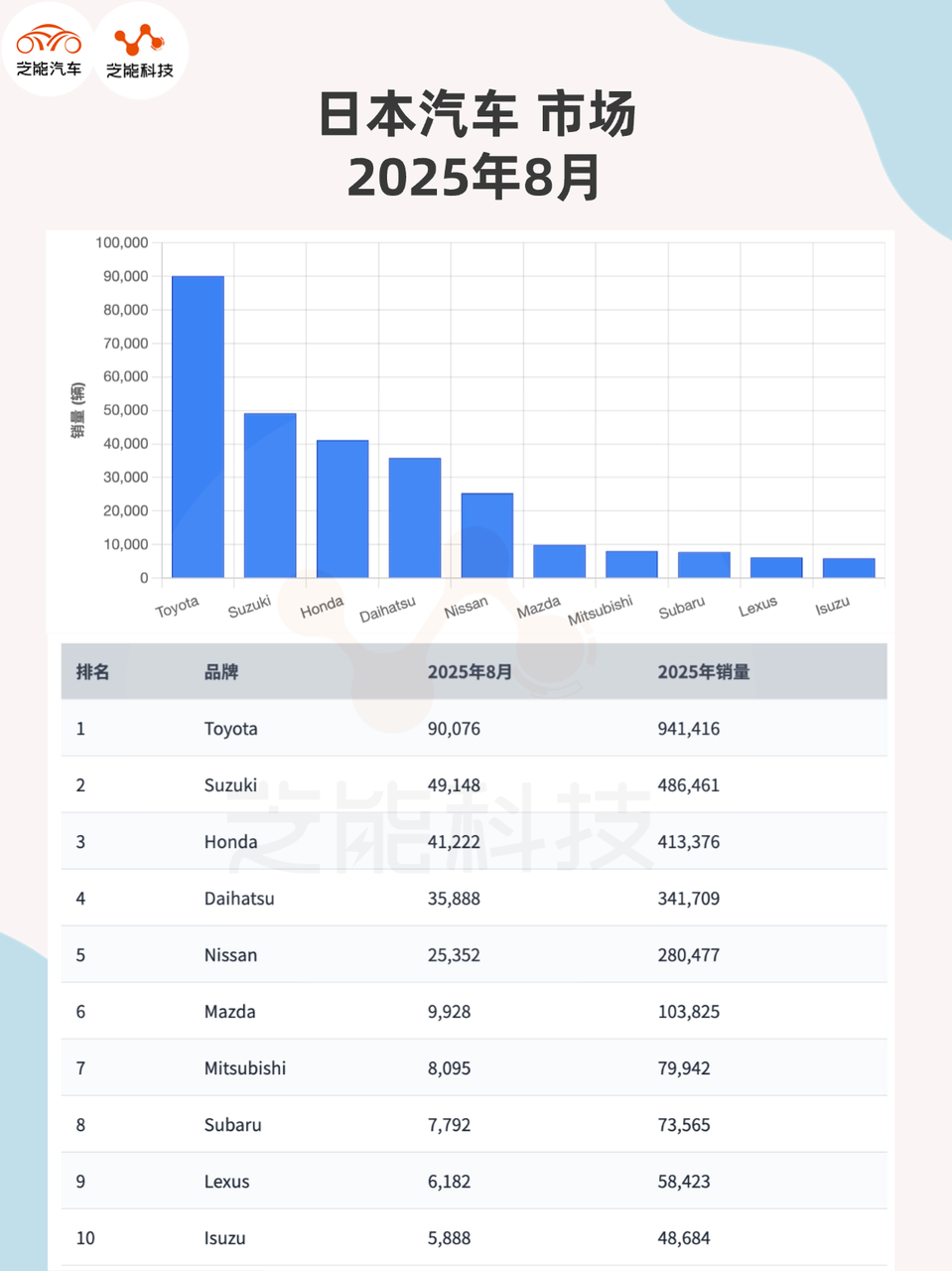
01
Overall Sales Trends and Brand Performance
The Japanese auto market continued its lackluster performance from July into the second half of the year, with 301,000 units sold in August, marking an 8.3% year-on-year decrease. Cumulative sales for the year reached 3,037,000 units, a 6.2% increase, with the first-half growth still bolstering the annual total.
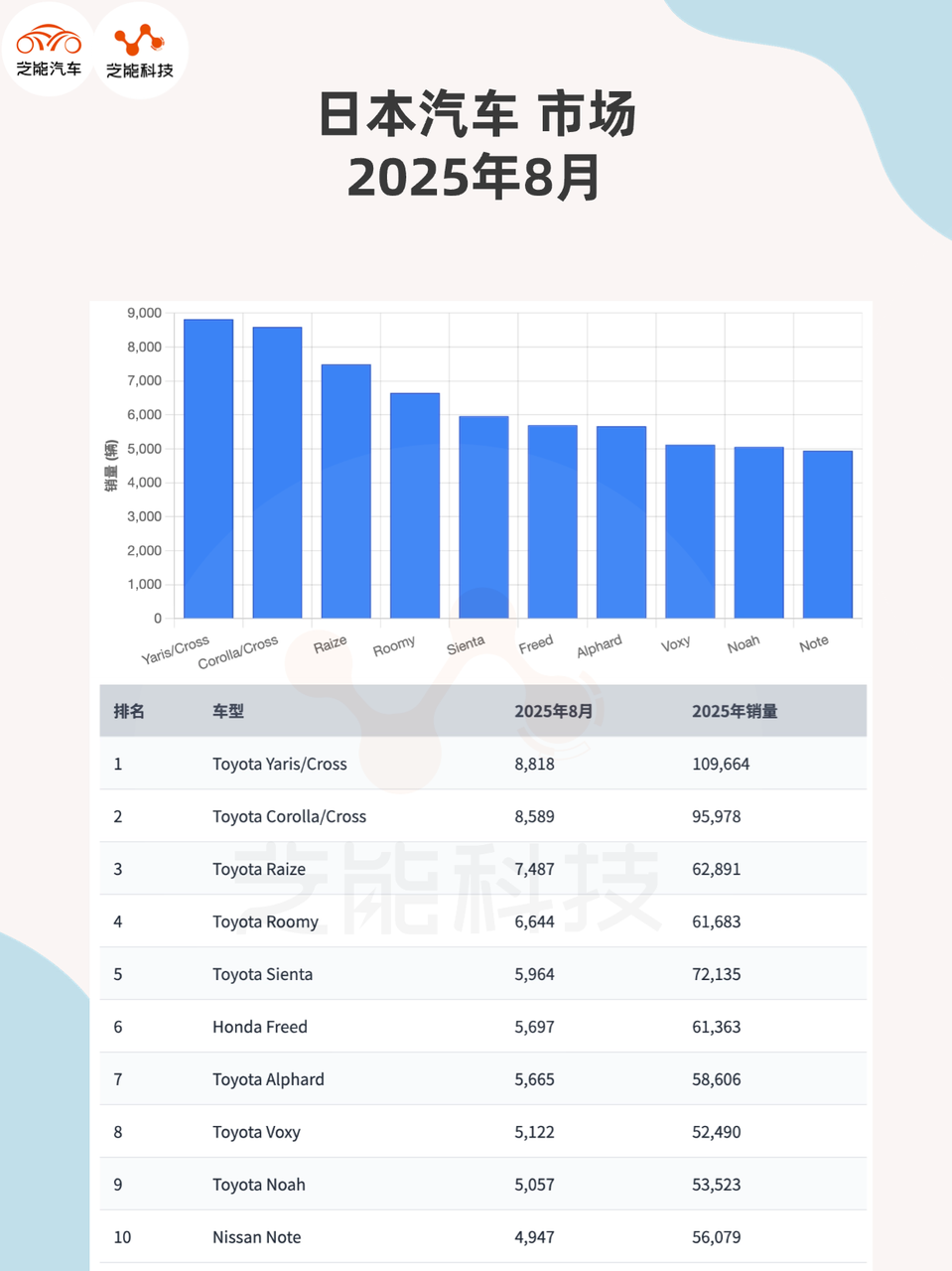
◎ Toyota sold 90,000 units, a 12.5% decrease, resulting in its market share dropping to 29.9%. This loss of its previously stable advantage is more attributable to product updates and adjustments.
◎ Suzuki, on the other hand, sold 49,100 units, a 0.7% increase, achieving counter-trend growth and dominating the low-priced light vehicle segment.
◎ Honda and Nissan were significantly affected, with sales decreasing by 10.1% and 22.2%, respectively. Nissan's market share fell to 8.4% due to the slow updates of its core models and sluggish progress in electrification.
◎ Mitsubishi and Mazda experienced declines within the 10% range, with Mazda's cumulative sales up by 15%, stabilized by its compact and crossover models.
◎ Daihatsu saw a 2.6% decrease in August but a 71.2% cumulative increase, with strong performance in the light vehicle market.
◎ Among luxury imported brands, Mercedes experienced a 20.2% decline in August, while BMW saw a 7% decrease. In contrast, Volkswagen and Mini increased by 46.5% and 27.7%, respectively. Product updates brought about fluctuations, with Japanese brands maintaining dominance but notable local breakthroughs by imported vehicles.
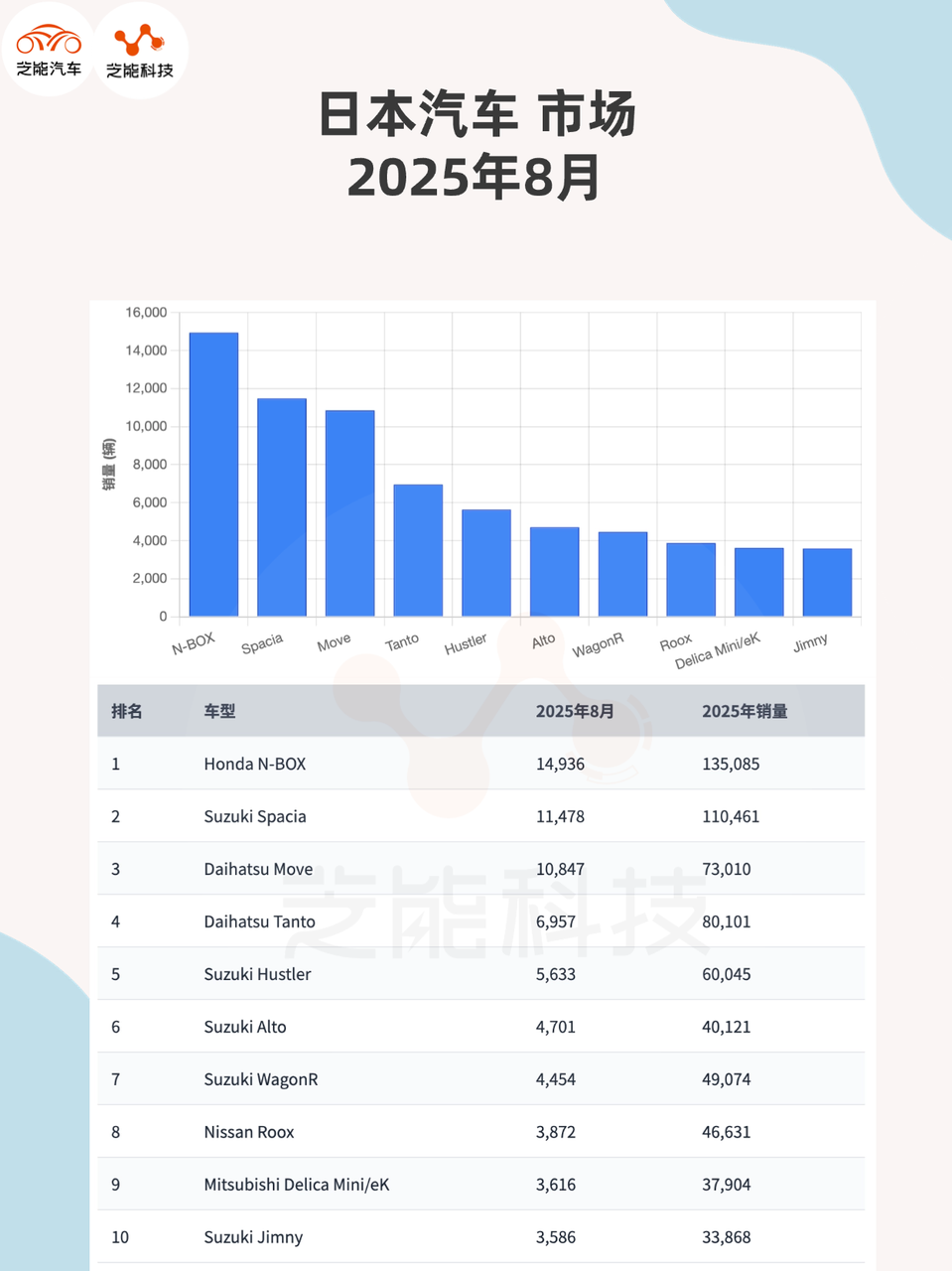
02
Model Performances and Market Segments
The model rankings underwent changes in August.
◎ Toyota Yaris and Corolla remained at the forefront, but Yaris saw a 0.9% decrease, and Corolla experienced an 18.5% decline, indicating pressure on compact car demand.
◎ Toyota Raize, however, increased by 37.1%, selling 7,487 units, becoming a standout performer, with small SUVs proving popular among young consumers.
◎ Daihatsu Move saw a remarkable 145% increase, selling over 10,000 units, standing out in the light vehicle market.
◎ Honda N-BOX and Suzuki Spacia continued to lead the light vehicle market.
◎ Suzuki Jimny and Daihatsu Mira also experienced growth, indicating sustained market demand for personalized small cars.
◎ Among regular cars, Honda Freed saw an 18.5% decrease but remained the highest-selling model outside of Toyota. Nissan Note and Serena experienced declines exceeding 20%, indicating fierce competition in the family car segment.
◎ Mitsubishi Delica D5 and Honda StepWGN increased by 54.4% and 43.5%, respectively, indicating strong demand for multi-functional vehicles.
SUVs and light vehicles were the mainstays of the market. The rise of the Raize and the stability of light vehicles reflected Japanese consumers' preference for cost-effective, urban-friendly vehicles.
Summary
In August 2025, the Japanese auto market experienced an overall decline, but with varied performances among brands and models. Toyota remained the dominant player but saw a reduced market share, with intensified competition. Suzuki achieved counter-trend growth through its light vehicles, while Daihatsu and SUV models demonstrated resilience.



